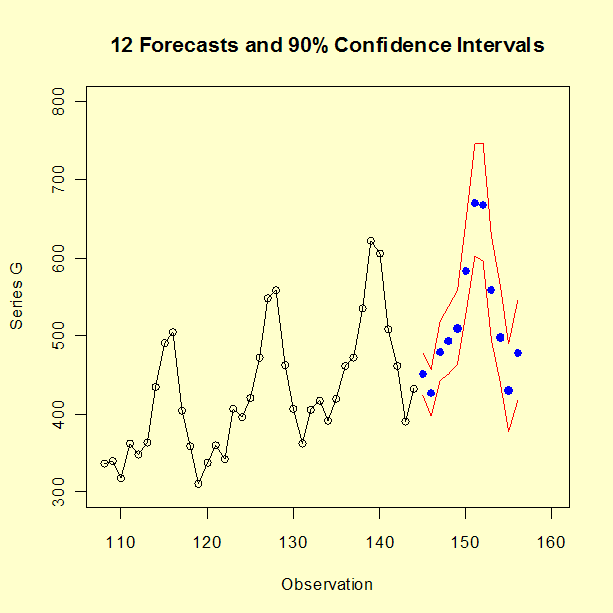6.4. Introduction to Time Series Analysis
6.4.4. Univariate Time Series Models
6.4.4.10. |
Box-Jenkins Analysis of Seasonal Data |
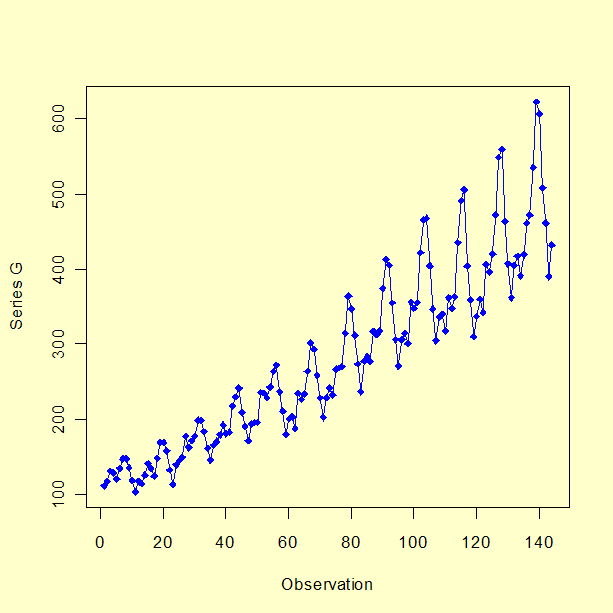
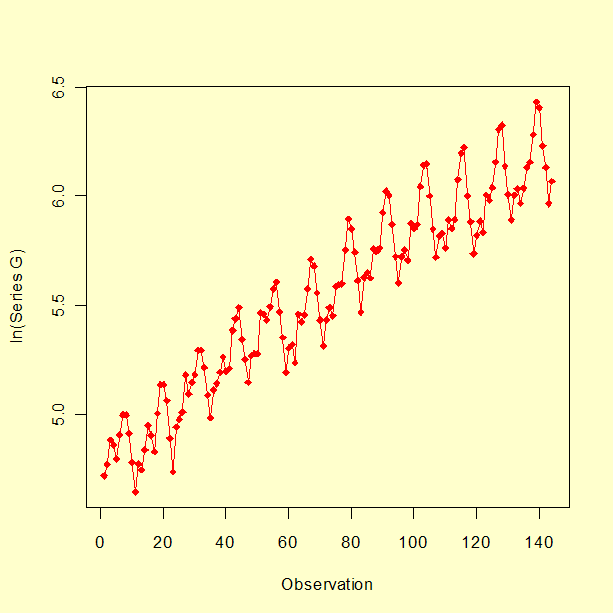
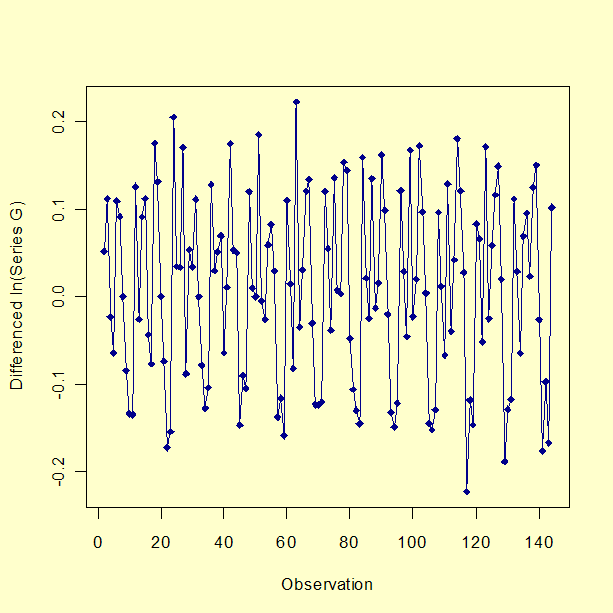
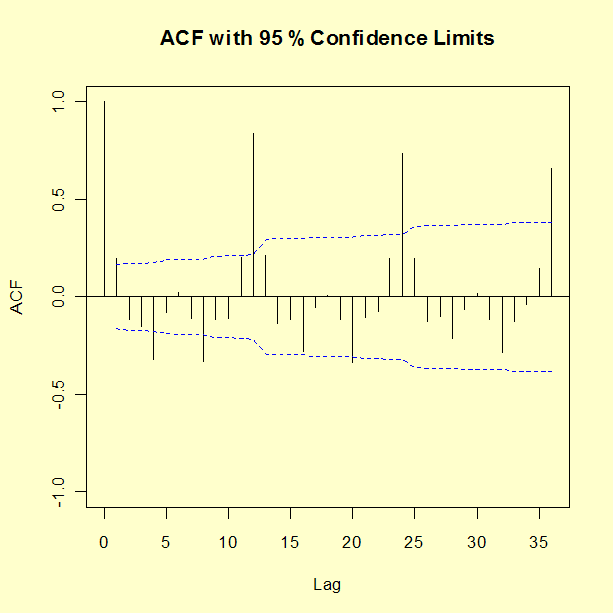
A plot of Series G after taking the natural log, first differencing, and seasonal differencing is shown below.
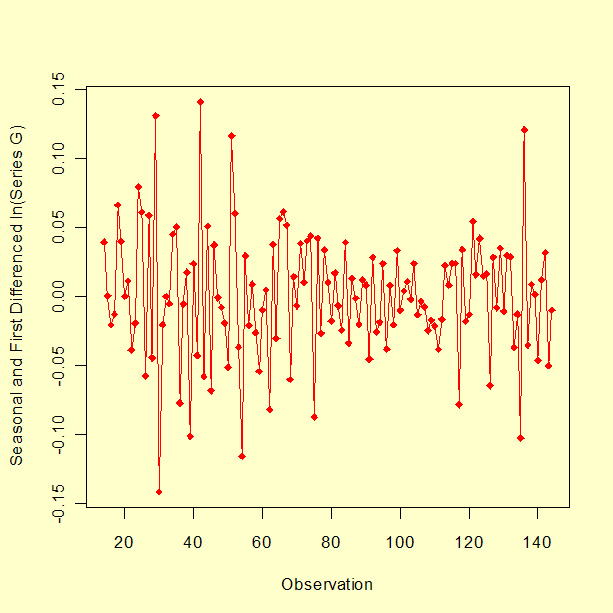
The book by Box and Jenkins, Time Series Analysis Forecasting and Control (the later edition is Box, Jenkins and Reinsel, 1994) has a discussion on these forecast functions on pages 326 - 328. Again, if you have only a faint notion, but you do know that there was a trend upwards before differencing, pick a seasonal MA term and see what comes out in the diagnostics.
An ACF plot of the seasonal and first differenced natural log of series G is shown below.
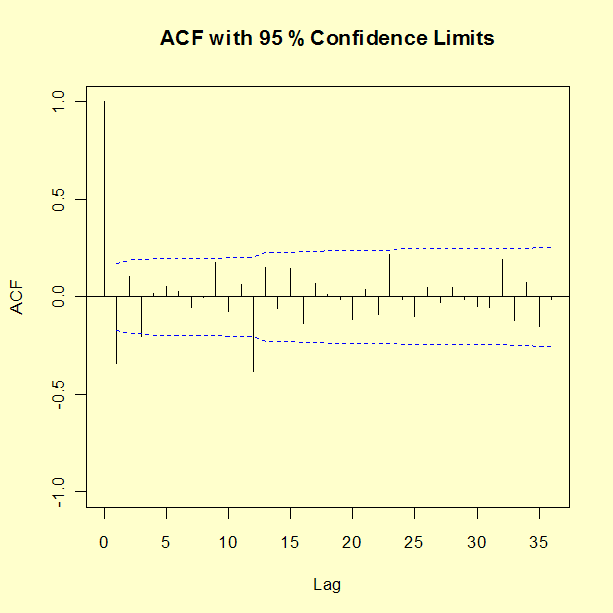
Seasonal Estimate MA(1) MA(1) -------- ------- ------- Parameter -0.4018 -0.5569 Standard Error 0.0896 0.0731 Residual standard deviation = 0.0367 Log likelihood = 244.7 AIC = -483.4Test the randomness of the residuals up to 30 lags using the Box-Ljung test. Recall that the degrees of freedom for the critical region must be adjusted to account for two estimated parameters.
H0: The residuals are random. Ha: The residuals are not random. Test statistic: Q = 29.4935 Significance level: α = 0.05 Degrees of freedom: h = 30 - 2 = 28 Critical value: Χ 21-α,h = 41.3371 Critical region: Reject H0 if Q > 41.3371Since the null hypothesis of the Box-Ljung test is not rejected we conclude that the fitted model is adequate.
Lower Upper
Period Limit Forecast Limit
------ -------- -------- --------
145 424.0234 450.7261 478.4649
146 396.7861 426.0042 456.7577
147 442.5731 479.3298 518.4399
148 451.3902 492.7365 537.1454
149 463.3034 509.3982 559.3245
150 527.3754 583.7383 645.2544
151 601.9371 670.4625 745.7830
152 595.7602 667.5274 746.9323
153 495.7137 558.5657 628.5389
154 439.1900 497.5430 562.8899
155 377.7598 430.1618 489.1730
156 417.3149 477.5643 545.7760
